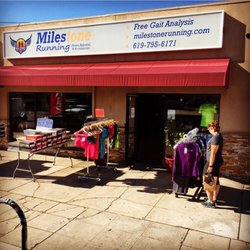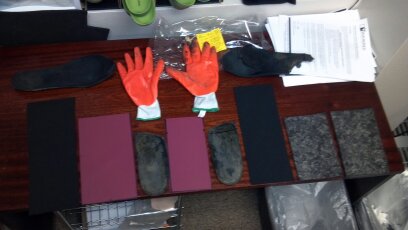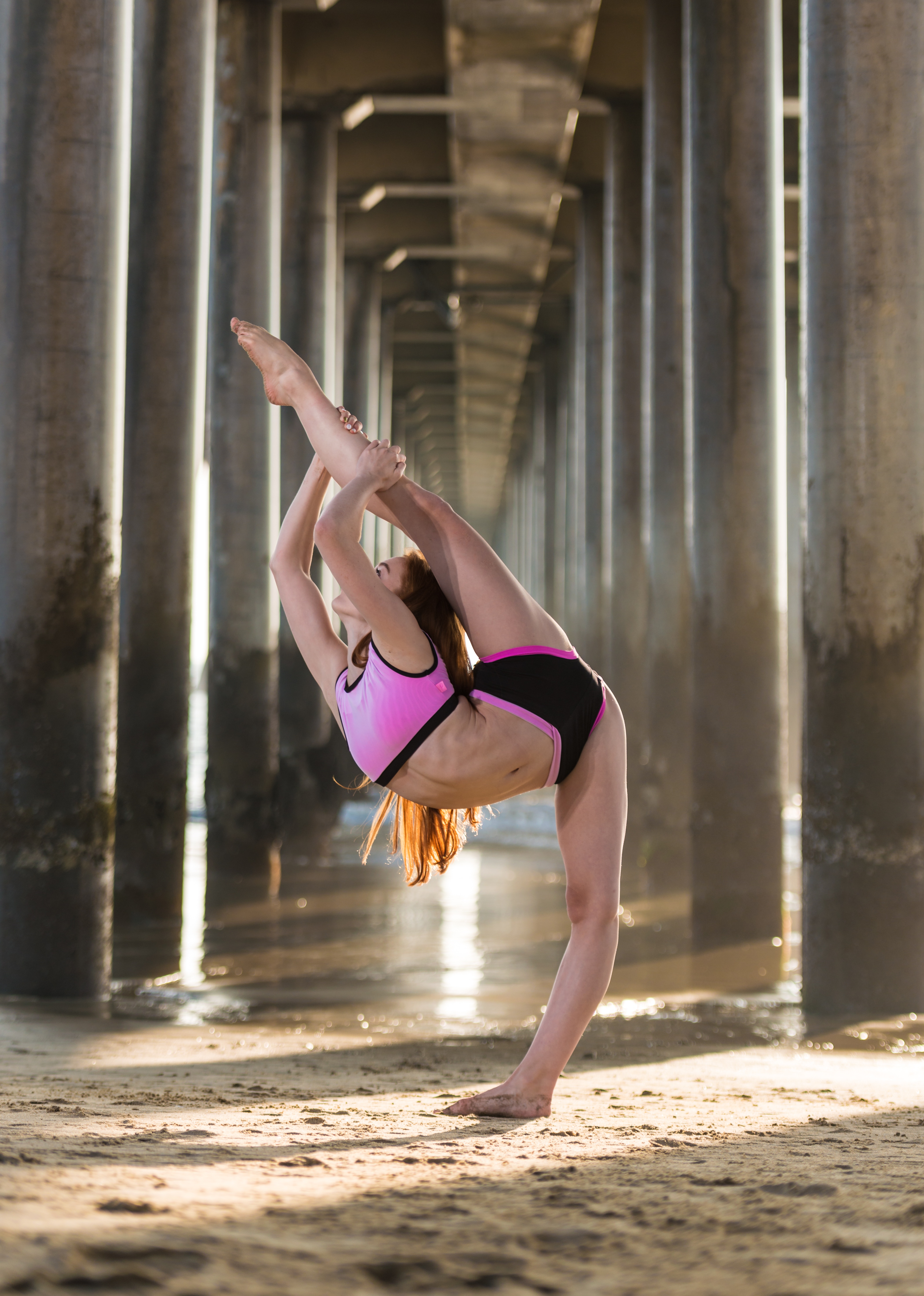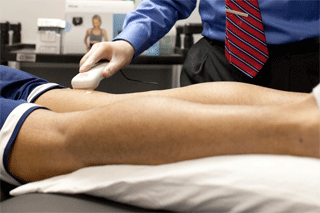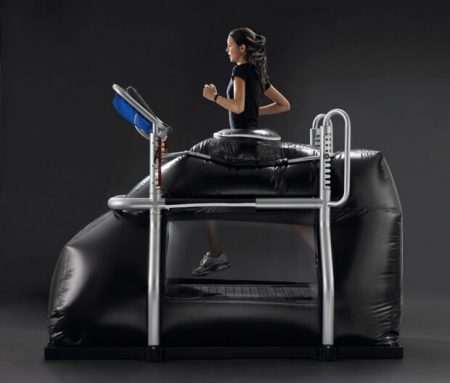You have been diagnosed with High Hamstring Tendonosis/Tendonopathy (HHT). Now what? This article and video will teach how to fix High Hamstring Tendonosis/Tendonopathy (HHT).
It is important to understand that HHT is scarring and thickening of the Hamstring tendon where it attached on your Ischial Tuberosity (SITS Bone). This scarring resulted from multiple microtears that occurred over time while symptoms were not treated or ignored.
HHT is a common condition in runners as the hamstrings are used repetitively and are prone to injury.
Common symptoms of HHT in runners are pain near the SITS bone and hamstring while running and is made worse by running faster or up hills. Many patients will report pain while sitting. This is due to the fact that you are sitting on the injured area.
Remove the Aggravating Variable to Fix High Hamstring Tendonosis/Tendonopathy (HHT)
The first thing to do is remove the variable that is either causing your HHT or contributing to it. For example; if running is irritating it and you keep running it will worsen and may lead to permanent damage of the Hamstring Tendon. Proper diagnosis is critical as HHT is commonly misdiagnosed as Ischial Bursitis, Sciatica and Piriformis Syndrome leading to poor and ineffective treatment suggestions.
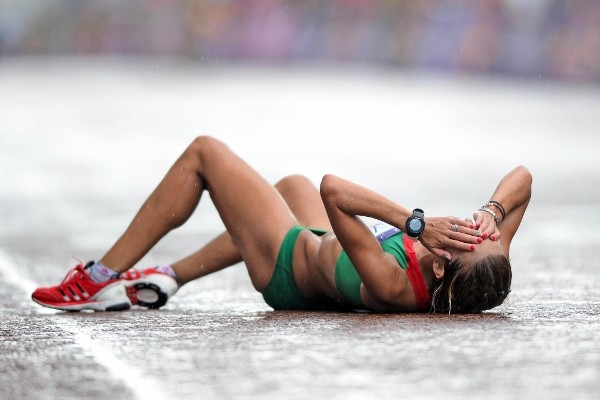
You must have an accurate diagnosis to receive effective treatment
Rest to Fix High Hamstring Tendonosis/Tendonopathy (HHT)
Rest from activity, especially those activities that require running, jumping, hiking as these will aggravate HHT. No amount of ice or Ibuprofen will help if you continue to not rest and aggravate your Hamstring. Let’s face it. Runners don’t want to stop running and hate the “R” word. In the case of HHT it will not get better unless you stop running.
Do I need Crutches to Fix High Hamstring Tendonosis/Tendonopathy (HHT)
It is not necessary to be non-weight bearing for an extended period. Casting or other devices that immobilize the hip and/or hamstring for an extended period may be counter-productive. There are various therapeutic interventions that can be used to fix High Hamstring Tendonosis/Tendonopathy (HHT). We have found that it all start with rest then platelet rich plasma therapy (more on that later).
Try Getting new Shoes to Fix your High Hamstring Tendonosis, Tendonopathy (HHT)
If you truly have HHT then shoes will not help. But if you don’t then sometimes change is good. By changing shoes you might change how your foot interacts with the ground. This in turn will affect the amount of rotation and torque at your hip which may be causing your Hamstring problem. There is no such thing as the “right shoe” or a shoe that is specifically designed to combat HHT. Common sense would dictate that if you were going to try new shoes to purchase a new shoe that is dramatically different to what you are currently wearing. Consider a rocker bottom shoe like a Hoka or a zero drop shoe like an Altra for example. If you live in San Diego go to Milestone Running Shop for your shoes. You will not be disappointed.
Over the Counter Orthotics WILL NOT help Fix High Hamstring Tendonosis/Tendonopathy (HHT)
Over the counter orthotics are a cheap and sometimes effective method of treating many conditions but they are not effective for High Hamstring Tendonosis/Tendonopathy (HHT). That being said, if the over the counter orthotic is going to have a chance at being effective it must have a supportive, flexible arch support and be comfortable. If the orthotic is too stiff, hard, uncomfortable and irritates your foot you will not be able to wear it and it will definitely not help your HHT.
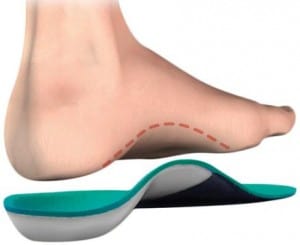
Over the counter orthotics must have flexible but supportive arches
Custom Orthotics to Fix High Hamstring Tendonosis/Tendonopathy (HHT)
Custom orthotics can be an effective treatment to fix HHT if something is wrong with your biomehcanics. To be effective, they must fit into your shoes, be comfortable and have a flexible, supportive arch as part of the custom orthotic design. Proper height, density and flexibility of the custom orthotic is critical to it being effective. If you have custom orthotics that are uncomfortable, do not fit into your shoes or aggravate your feet or your Hamstring you will be unable to heal. If you have an uncomfortable or ineffective pair of custom orthotics they may be able to be modified for a fraction of the cost compared to buying new custom orthotics.
Taping can help Fix High Hamstring Tendonosis/Tendonopathy (HHT)
Taping can be effective in treating HHT if used as a piece of the rehabilitation process. A common and effective taping procedure tapes along the Hamstring to provide support. Taping can be inconvenient. There is a more effective method of treating the HHT. A Hamstring compression brace worn in the right location with enough compression may remove some of the stress and pain associated with High Hamstring Tendonosis/Tendonopathy (HHT).
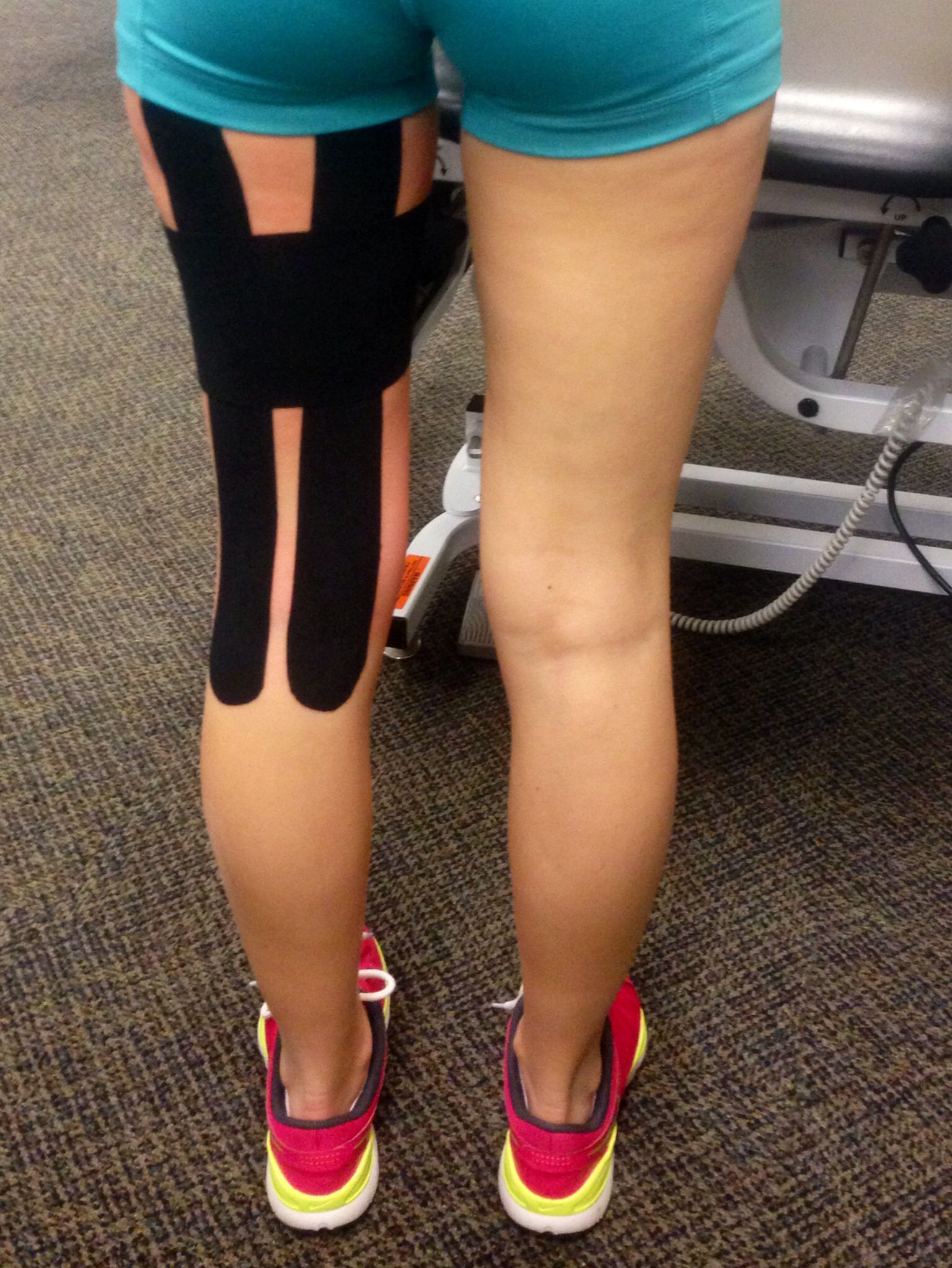
Taping can be effective but a brace provides more compression and is easier to use
Will a Hamstring Compression Brace Fix High Hamstring Tendonosis/Tendonopathy (HHT)
The proper compression strap may help alleviate some of the stress and pain associated with HHT although it will not fix it. This can be important if you have an upcoming race or event that you want to get through. We have found the Hamstring compression brace to be effective in mild cases and can also be used in conjunction with Hamstring Taping.
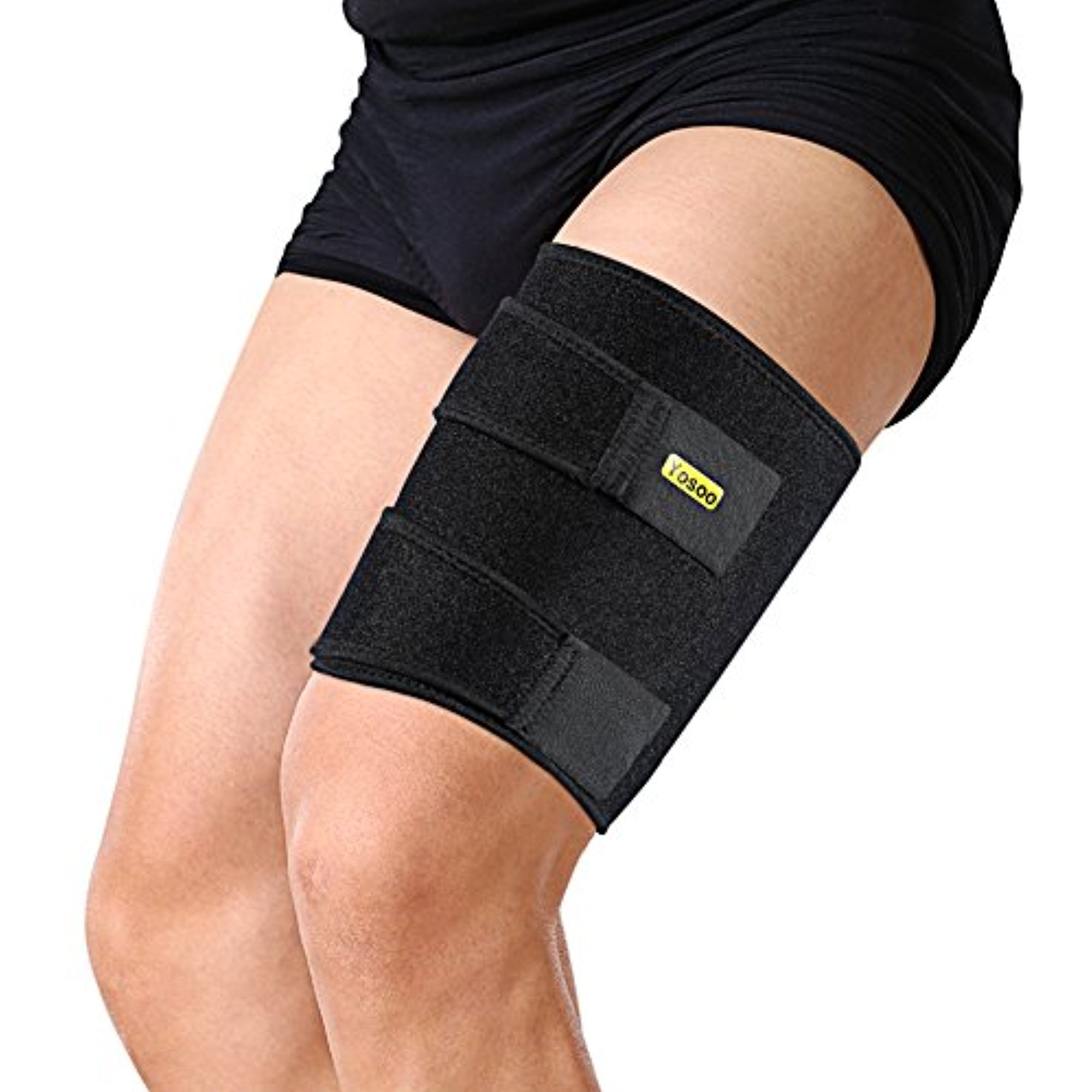
Braces are simpler to use than constantly taping
Will Stretching Help Fix High Hamstring Tendonosis/Tendonopathy (HHT)
Stretching is typically not an effective therapy to fix High Hamstring Tendonosis/Tendonopathy (HHT). However, if used as a part of an overall plan to fix theHHTthan it should not be discouraged. Stretching like any other intervention must be done correctly to be effective. In our experience it is not unusual for patients to be over-stretching and actually hurting themselves! Over-stretching can actually pull muscle and tendon fibers apart and cause micro-tearing.
Will Strengthening Help Fix High Hamstring Tendonosis/Tendonopathy (HHT)
Strengthening can help fix High Hamstring Tendonosis/Tendonopathy (HHT) when combined with other interventions such as stretching, foam rolling, ultrasound therapy, myofascial release and Alter Gravity Treadmill Strengthening and Running. Our complete home program can be taught to you in our clinic or you can purchase it for $37 by emailing info@sdri.net
Myofascial Release/Graston/ART/Gua Sha can help Fix High Hamstring Tendonosis/Tendonopathy (HHT)
These are all techniques that apply manual massage directly to the injured area of the Hamstring. While this therapy can be effective it is important to apply the correct amount of pressure to ensure you do not further damage the injured Hamstring. Too much pressure, too little pressure or the wrong kind of pressure (like using a golf ball) can lead to ineffective treatment and worsening of HHT.
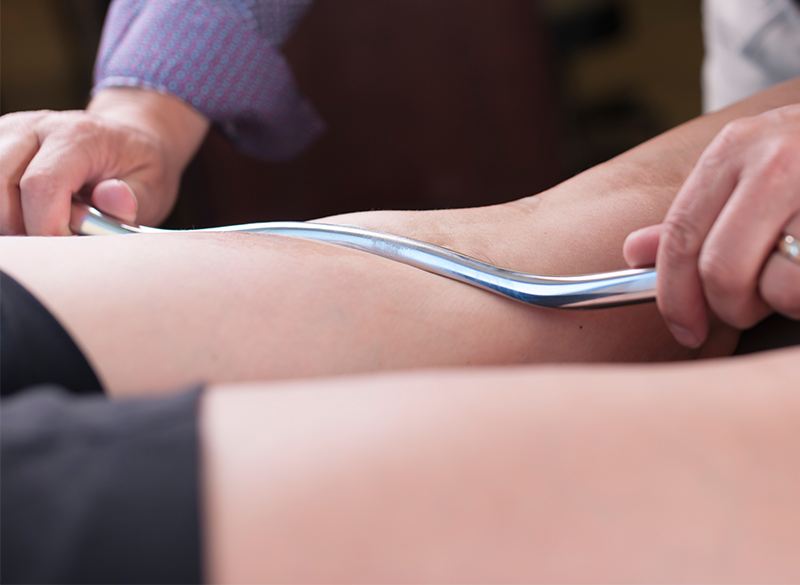
Myofascial Release can be performed by hand or with specialized tools
Ultrasound can help Fix High Hamstring Tendonosis/Tendonopathy (HHT)
Ultrasound can be an effective treatment for HHT when combined with some or all the above interventions. Ultrasound can be used to break up scar tissue and increase blood flow into the High Hamstring Tendon. Tendons are notorious for having a lack of blood flow. Blood is required for the Tendons to heal.
The AlterG is one of the most modern and effective treatments for HHT and allows the patient to run or walk while their Hamstring is healing. The AlterG does this by “unweighting” a person until there is not enough pressure on the Hamstring to cause pain. Once this is achieved the patient can run or walk without aggravating the HHT. This allows them to keep up their cardio, continue to train for an event and stimulates blood flow into the Hamstring origin to speed healing.
Cortisone Injection is not recommended to Fix High Hamstring Tendonosis/Tendonopathy (HHT)
Cortisone is not recommended for HHT. Cortisone is a catabolic hormone meaning it breaks things down (as opposed to an anabolic hormone that builds tissue). While it does break down inflammation it also breaks down tissue, in this case where your Hamstring inserts on the bone. This can cause long term damage to the Tendon and is therefore not recommended. However, if you have Ischial Bursitis then a one time cortisone shot could prove quite helpful.
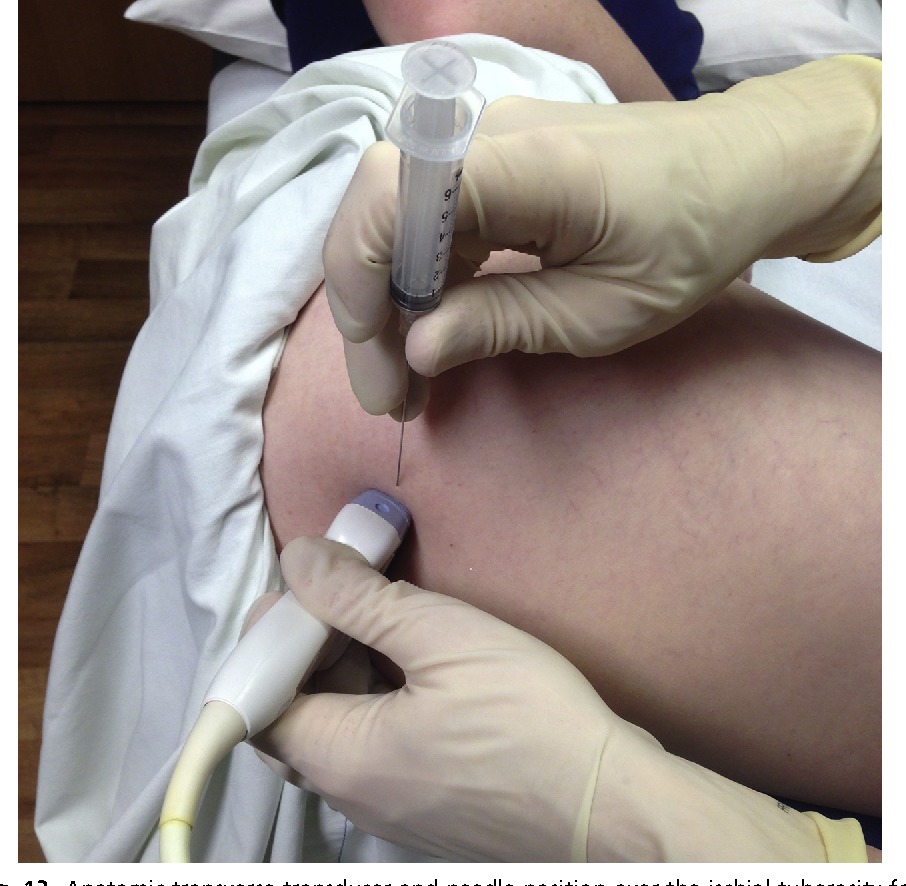
Cortisone IS NOT recommended for HHT but can be effective for Ischial Bursitis
Surgery is usually not Necessary to Fix Iliotibial Band Syndrome
Surgery is not usually necessary to fix HHT. However, if you go to a surgeon and they recommend surgery……. what did you expect. HHT, if treated conservatively will almost always heal and not require surgery.
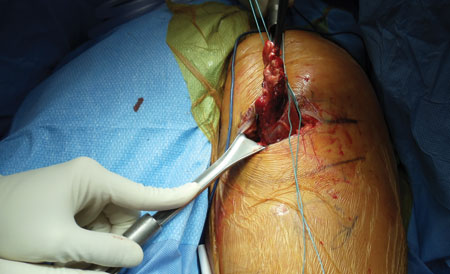
HHT will normally heal with conservative treatment and not require surgery
If you need more information about HHT and the treatments that can fix it please email info@sdri.net or call San Diego Running Institute at 858-268-8525 to schedule an appointment.

